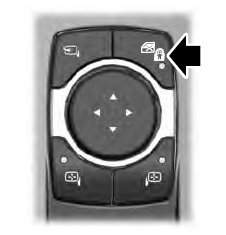Lincoln Aviator: Supplemental Restraint System / General Procedures - Inspection and Repair after a Supplemental Restraint System (SRS) Deployment
Inspection
NOTE: Deployable devices such as airbags, pretensioners and inflatable belt inflators, may deploy alone or in various combinations depending on the impact event.
NOTE: Always refer to the appropriate workshop manual procedures prior to carrying out vehicle repairs affecting the SRS and seatbelt system.
NOTE: The SRS must be fully operational and free of faults before releasing the vehicle to the customer.
-
NOTE: Refer to the correct removal and installation procedure for all SRS components being installed.
When any deployable device or combination of devices have deployed and/or the RCM has DTC B1193:00 (event threshold exceeded) in memory, the repair of the vehicle SRS is to include the removal of all deployed devices and the installation of new deployable devices, the removal of all impact sensors and installation of new impact sensors and the removal and installation of a new RCM. Diagnostic Trouble Codes (DTCs) must be cleared from all required modules after repairs are carried out.
-
NOTE: After installation of new OCS components, use a diagnostic scan tool to carry out the OCS Reset procedure as instructed in the workshop manual.
When a vehicle has been involved in a collision and the OCSM has DTC B1193:00 stored in memory, inspect the OCS for damage and repair as necessary. If installation of an OCS component is required, an OCS service kit must be installed.
-
When any damage to the impact sensor mounting points or
mounting hardware has occurred, repair or install new mounting points
and mounting hardware as needed.
-
When the driver airbag has deployed, install a new steering wheel and clockspring.
-
NOTICE: Precise tolerances are required when manufacturing a steering column. Never install a repaired, rebuilt or remanufactured steering column, always install a new steering column. Failure to follow this direction can result in steering column failure.
Install a new adaptive energy absorption steering column if:
-
Steering wheel is bent, loose or damaged
-
Steering column functionality is binding, bent or sticking
-
Steering column bearings brinelling or damaged
-
Steering shaft bent, loose or damaged
-
Any abnormal steering column movement
-
Steering wheel is bent, loose or damaged
-
New driver and/or front passenger seatbelt systems
(including seatbelt retractors, seatbelt buckles and height adjusters)
must be installed if the vehicle is involved in a collision that results
in deployment of the driver and/or front passenger seatbelt
pretensioners.
-
New second row seatbelt systems (including seatbelt
retractors, seatbelt buckles and inflators) must be installed if the
vehicle is involved in a collision that results in deployment of the
rear seatbelt pretensioners (if equipped) or inflatable seatbelt system
(if equipped).
-
Inspect the entire vehicle for damage, including the following components:
-
Instrument panel and mounting points
-
Instrument panel braces and brackets
-
Instrument panel knee bolsters and mounting points
-
Safety Canopy® and mounting points
-
Seatbelts, seatbelt buckles, seatbelt retractors and seatbelt anchors.
-
Seats and seat mounting points
-
SRS wiring, wiring harnesses and connectors
-
Instrument panel and mounting points
-
After carrying out the review and inspection of the
entire vehicle for damage, repair or install new components as needed.
-
Inspect the fuel system for damage or leaks. Repair the system and install new components as necessary.
-
-
Connect a diagnostic scan tool and view the BCM CRASH PID.
-
If the BCM CRASH PID is present and reads 'Yes', use the diagnostic scan tool to carry out the BCM Crash Status Reset under "Electrical - Service Functions".
-
If the BCM CRASH PID reads 'No' or is not present, complete any necessary repairs before returning the vehicle to the customer.
-
Connect a diagnostic scan tool and view the BCM CRASH PID.
 General Procedures - Clockspring Adjustment
General Procedures - Clockspring Adjustment
Special Tool(s) /
General Equipment
Adhesive Tape
WARNING:
If the clockspring is not correctly centralized, it may fail
prematurely...
 General Procedures - Pyrotechnic Device Disposal
General Procedures - Pyrotechnic Device Disposal
Disposal
Disposal of Deployable Devices and Pyrotechnic Devices That Are Undeployed-Inoperative
NOTE:
All inoperative airbags, seatbelt pretensioners and
inflatable seatbelt inflators have been placed on the Mandatory Return
List...
Other information:
Lincoln Aviator 2020-2025 Service Manual: Removal and Installation - Front Bumper
Special Tool(s) / General Equipment Interior Trim Remover Removal Remove the front bumper cover. Refer to: Front Bumper Cover (501-19 Bumpers, Removal and Installation). Release the tabs and remove the front bumper energy absorber...
Lincoln Aviator 2020-2025 Owners Manual: Engine Compartment Fuse Box
WARNING: Always disconnect the battery before servicing high current fuses. WARNING: To reduce risk of electrical shock, always replace the cover to the power distribution box before reconnecting the battery or refilling fluid reservoirs. The engine compartment fuse box is under the driver side leaf screen in the engine compartment...
Categories
- Manuals Home
- Lincoln Aviator Owners Manual
- Lincoln Aviator Service Manual
- Configuring The Head Up Display
- Body and Paint
- Description and Operation - Jacking and Lifting
- New on site
- Most important about car
Child Safety Locks
When the child safety locks are set, you cannot open the rear doors from the inside.

The child safety lock control is on the driver door.
Press the control to switch the child safety locks on. Press the control again to switch them off. A light on the child safety control illuminates when you switch them on.
